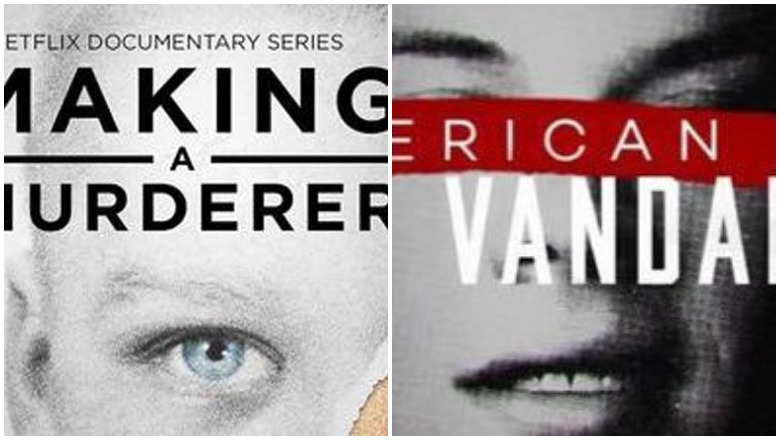
If you’ve seen American Vandal, the new Netflix spoof on defendant-focused, true-crime documentaries, you know that it works on multiple levels.
The show parodies the tropes seen in series like Making a Murderer, Jinx, and Serial. Its creators have acknowledged this is intentional. It’s hilarious to spot the now well-tread archetypes and narratives that once seemed fresh but are getting a bit predictable.
However, American Vandal also makes serious points beneath the comedy. It takes you on a wild ride from one red herring to the next, convincing you that so-and-so is the “dick drawing” culprit before proving otherwise (the show revolves around the central mystery of who spray-painted big red “dicks” on teachers’ cars in the Hanover High parking lot.) The central theme of the show remains how easy it is to make anyone look guilty, especially when the person lacks social capital or has a past. Sound familiar?
Brings us to Making a Murderer, the much binge-watched Netflix series documenting the real-life Wisconsin case of Steven Avery and his nephew, Brendan Dassey. To some degree, American Vandal’s Dylan Maxwell is an amalgamation of both of them. There are some obvious differences. For starters, Avery and Dassey are real, and American Vandal – despite what some people think on Twitter – is fiction. There was a real victim in the Wisconsin case – Teresa Halbach, a photographer – and that is a very serious and awful matter.
However, American Vandal clearly borrowed elements from its predecessor.
Warning: Plot spoilers ahead.
Here are some of the similarities between American Vandal and Making a Murderer:
Dylan Has a Past & He’s a Social Outcast
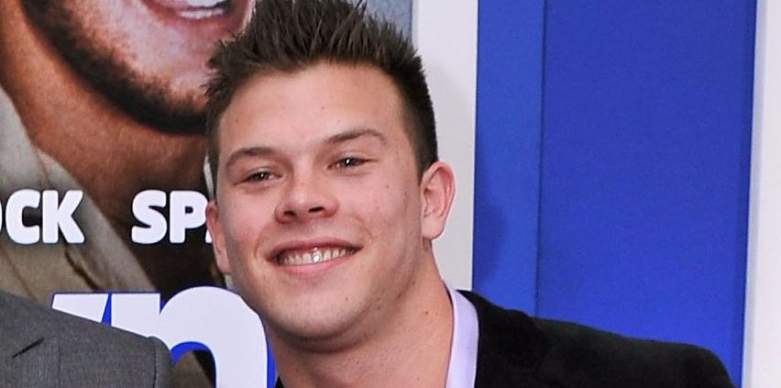
GettyJimmy Tatro, who plays Dylan Maxwell in American Vandal.
To some degree, Maxwell shares more in common with the younger Avery than the older one; the Wisconsinite was wrongfully convicted of raping a woman and served years in prison before he was exonerated and freed. A short time later, he was accused – and later convicted of – murdering a young photographer who came to his family’s junkyard, Halbach.
In Avery’s original wrongful conviction, there were allegations that authorities may have rushed to judgment because of his unsavory reputation around town and brushes with the law. Dylan Maxwell has a past too. He was a known dick drawer, and he had a bad reputation with authorities for goofing around in class and doing lewd and absurd pranks on a YouTube channel. The spoof takes real-life serious narratives and twists them around an absurd situation.
When it came to the Halbach murder, Steven Avery’s past involved a civil suit against the authorities in the very county where he now stood trial again (although there was a special prosecutor, and a neighboring agency took the lead.) However, a central premise of Making a Murderer revolved around allegations that authorities were too biased against Avery to give him a fair shake (they deny that.) In American Vandal, the school district and teachers are predisposed to believe Dylan’s guilt because they’ve had problems with him before, and they just don’t like him. Would they have rushed to judgment against the popular kids? The show convincingly sketches out how many people at Hanover High would have made equally plausible suspects if any authorities had decided to look. It’s harder to prove innocence than to convince one of guilt sometimes, the show argues.
An Eye Witness Got It Wrong
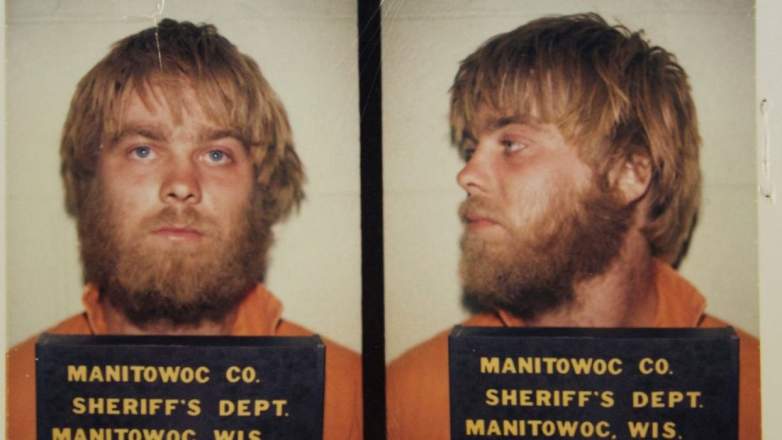
Steven Avery.
In American Vandal, the School Board’s star witness, eye witness Alex Trimboli, is convinced he saw Dylan Maxwell painting the dicks. The viewer is led to believe that Trimboli is a serial exaggerator, but, by the end of the series, we are convinced that he probably saw someone who looked like Dylan drawing the dicks… but it was someone else. In other words, he was wrong but mistaken. In that way, the show highlights the fallibility of eye-witness testimony, a serious issue beneath the mockery.
There were no eye witnesses to the murder of Halbach, other than – according to the prosecution and police – Avery’s nephew, Brendan Dassey, whose confessions led to his own conviction overturned by the courts (Dassey remains in prison pending the state’s appeal). Making a Murderer clearly tries to make viewers think that Dassey’s confessions were manipulated by craftier and older law enforcement, and some key courts have agreed. In American Vandal, the theory is presented that a malevolent teacher, Mrs. Shapiro, might have manipulated Trimboli into identifying Maxwell as the dick drawer.
However, the closer analogy is, again, to Avery’s earlier wrongful conviction. In that case, the rape victim identified Avery as her assailant, although evidence later pointed to another man – a man who looks remarkably like Avery himself.
Barb
Dassey’s real-life mom, Barb, looks like a doppelganger of Maxwell’s equally loyal and weary blonde mother.
IQ
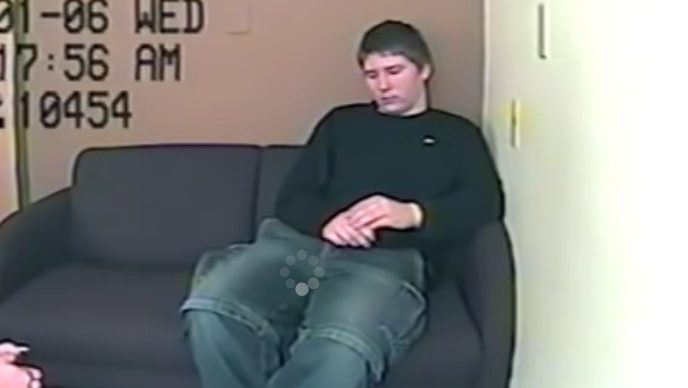
A screenshot from an interrogation of Brendan Dassey. YouTube
We’re led to believe by Making a Murderer that Dassey and Avery are not the brightest crayons in the intelligence box, making it easier for law enforcement to manipulate them, especially in the case of Dassey, a high school student. In contrast to, say, the real-life teenage defendants in the Netflix series The Confession Tapes, who come across as clever, Dylan Maxwell is also a very dim bulb. This creates a sense of naivete when he testifies before the School Board, actually presuming he will get a fair shake. That’s shades of Dassey.
Paint Splatter Evidence
Blood splatter evidence in the victim’s car – that was linked through DNA testing to Avery – was pivotal in his murder conviction. Red paint splatter evidence all over the victims’ cars in the teacher’s parking lot helps the documentary filmmakers figure out the key suspect in American Vandal. And, plot spoiler alert, it’s not Dylan.
No Hard Evidence Against Him

GettyJimmy Tatro AKA Dylan Maxwell of American Vandal.
There’s no concrete forensic evidence that Dylan drew the dicks. There wasn’t any significant forensic evidence against Dassey, either. (Avery is a different tale.) Without forensic evidence, you end up with the fallibility of human beings (eyewitnesses, and so forth.)
He Became What They Thought He Was
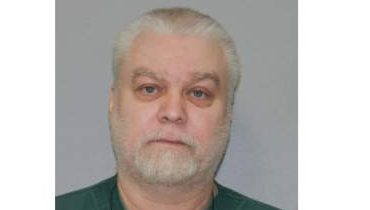
Steven Avery’s most recent photo from the Wisconsin prison system.
Although the filmmakers deny it, it’s hard to watch Making a Murderer and not think the two documentarians, who were New York film students when they started making it, were not shaping viewers’ perceptions in favor of Avery and Dassey. In fact, that’s what made the show feel fresh (Jinx and Serial too.) Unlike cable news true-crime sagas (think OJ, Chandra Levy, Jon Benet, and Laci Peterson), these new shows didn’t shape narratives against the defendants or accused (trial by media); rather, they told the defendants’ sides in a very humanized way (while shaping narratives against the system). In a media culture that also focuses on local TV news’ reliance on mugshots and people in orange jump suits for dehumanized, episodic crime coverage, this was refreshing and felt new.
However, perhaps the filmmakers in Making a Murderer missed a chance to more fully explore another possibility: That prison, for the earlier wrongful conviction, helped make Avery into a murderer, not that he was wrongfully convicted twice. That’s not to say that he wouldn’t bear his own responsibility. However, what if prison unalterably changed him – prison time he never should have served? Did the system bear culpability in a different, more complex way?
American Vandal goes there. We don’t want to give everything away, but Dylan didn’t draw the dicks, but he ended up drawing a dick. Once you get to the end, you’ll see what we mean. He became what they wrongly thought he was because his life pretty much unraveled after his exoneration. The same was true of Avery, who went from being a minor Wisconsin celebrity to living in a fish shanty and then someone else’s trailer.
The Tight Timeline
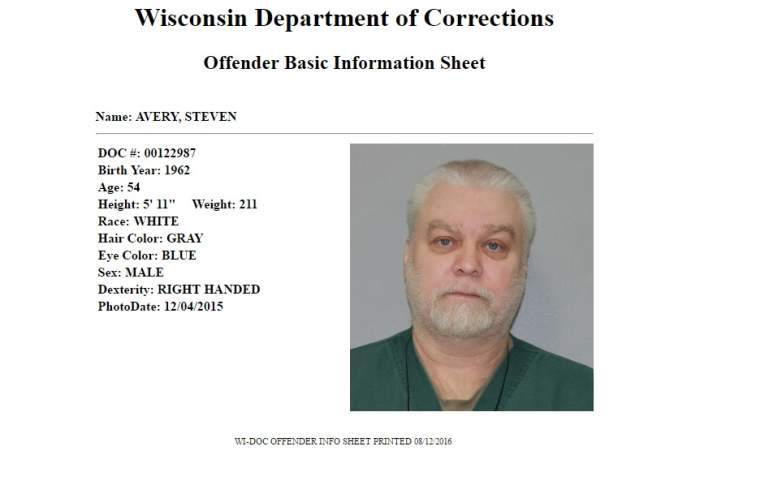
Steven Avery current Department of Corrections photo.
Again, the almost alibi that Dylan has for the dick drawing shares more in common with Avery’s earlier conviction for the rape case because there was such a tight time frame in which he could have done it that it was almost… almost… almost completely implausible. But not quite.
The Family
American Vandal shows that teachers prejudged Dylan because they didn’t like his goof-off brother. Avery and Dassey were part of a junkyard family regarded as social outcasts in their small town. The way the family is perceived in town, including by authorities, is a core part of the Netflix show. Making a Murderer was as much a show about the social milieu as it was about the crime. American Vandal is like that too, although the class issues are not as pronounced (neither are the hairstyles and accents).
Two Young Documentarians
American Vandal is focused around two high school filmmakers who aren’t as convinced as the rest of the world that this is an open-and-shut case. Making a Murderer was filmed by two real-life college filmmakers, who made a documentary because they weren’t as convinced as the rest of the world that the Avery and Dassey cases were so clear-cut. In the latter, though, the filmmakers are not characters in their own show.
The Differences

Crime scene photo. (Manitowoc County Circuit Court)
There are some key differences too, in addition to the seriousness of the real crime. Making a Murderer is largely a court drama/procedural, whereas American Vandal’s courtroom is the School Board (Dylan’s charged, but we barely see anything about that.) Making a Murderer alleges (without proving) the possibility of police evidence planting, whereas no one planted the dicks.
Making a Murderer, somewhat oddly, didn’t explore or really even mention alternative suspects (maybe the show will go there in season 2), focusing instead on asking questions without offering new answers. American Vandal, Cold Justice style, goes through all of the pros and cons of various alternative suspects, following the investigators around as they investigate.
The attorneys became stars in Making a Murderer, but Dylan’s lawyer is relegated to a bit part dominated by a bad bald spot. American Vandal also makes use of modern media, especially social media video as evidence, whereas the only video in the pre social media age real-life trials of Avery and Dassey was Dassey confessing on tape. Dylan doesn’t confess in Vandal.
The two shows, in the end, though, fundamentally strive to make the same deeper point: That the criminal justice system is a flawed place filled with inherent biases, and we don’t all get the same shake.

